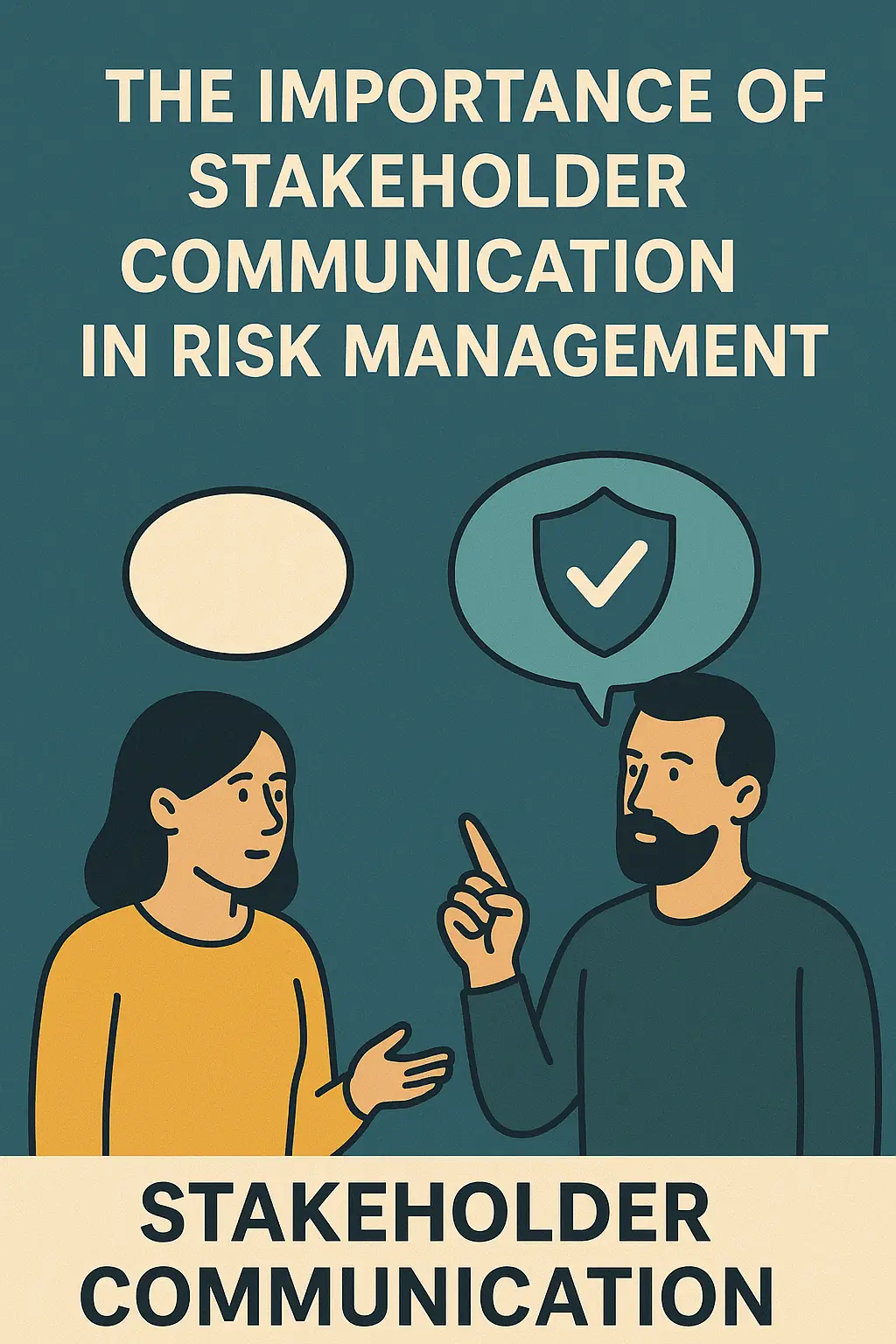Introduction
Risk management plays a pivotal role in ensuring project success. At its core, risk management involves identifying potential threats and opportunities that could impact a project, allowing project managers to proactively address these issues before they escalate. This process is particularly crucial in software development, where the dynamic nature of technology and user requirements can introduce a myriad of uncertainties. Effective risk management not only safeguards project timelines and budgets but also enhances the overall quality of the final product.
Stakeholders are integral to any project, encompassing anyone who has an interest in the project’s outcome, including team members, clients, investors, and end-users. Their involvement is essential, as they can provide valuable insights and feedback that inform the risk management process. Engaging stakeholders ensures that diverse perspectives are considered, which can lead to a more comprehensive understanding of potential risks and their implications.
The relationship between effective communication and risk mitigation cannot be overstated. Clear and consistent communication with stakeholders helps to reduce misunderstandings and align expectations, which is vital for identifying and addressing risks early in the project lifecycle. By keeping stakeholders informed and involved, project managers can foster a collaborative environment that not only enhances risk identification and assessment but also promotes a culture of transparency and trust. This proactive approach to communication ultimately leads to better decision-making and more successful project outcomes, as potential risks are managed more effectively through collective input and shared understanding.
Understanding Stakeholders in Software Projects
Stakeholders play a pivotal role in shaping the project’s direction and success. Effective communication with these stakeholders is essential for identifying and mitigating risks throughout the project lifecycle. Below are key points that define stakeholders, categorize them, and highlight their significance in software projects.
Defining Stakeholders
Stakeholders are individuals or groups that have an interest in the outcome of a project. They can be categorized in various ways.
Internal vs. External Stakeholders:
- Internal Stakeholders: These include team members, project managers, and executives within the organization. They are directly involved in the project and have a vested interest in its success.
- External Stakeholders: This group encompasses clients, suppliers, regulatory bodies, and end-users. Their needs and expectations can significantly impact project decisions and outcomes.
Primary vs. Secondary Stakeholders:
- Primary Stakeholders: These are individuals or groups who are directly affected by the project. For instance, end-users who will utilize the software are primary stakeholders.
- Secondary Stakeholders: These stakeholders may not be directly impacted but can influence or be influenced by the project. This includes management and other departments that may rely on the software’s functionality.
Importance of Understanding Stakeholder Interests and Concerns
Understanding the interests and concerns of stakeholders is crucial for several reasons:
- Alignment of Goals: By recognizing what stakeholders value, project managers can align project objectives with stakeholder expectations, reducing the likelihood of conflicts and misunderstandings [1].
- Risk Identification: Stakeholders often have insights into potential risks that may not be apparent to the project team. Engaging them in discussions can lead to the identification of risks early in the project [2].
- Enhanced Communication: Clear communication about stakeholder interests fosters trust and transparency, which are vital for effective collaboration [3].
Influence of Stakeholder Involvement on Project Success
The involvement of stakeholders can significantly influence the success of a software project:
- Improved Decision-Making: When stakeholders are actively involved, their feedback can guide critical decisions, ensuring that the project meets user needs and expectations [4].
- Increased Buy-In: Engaging stakeholders throughout the project fosters a sense of ownership and commitment, which can lead to greater support and resources for the project [5].
- Mitigation of Risks: By keeping stakeholders informed and involved, project managers can address concerns proactively, reducing the risk of project delays or failures [6].
Identifying Risks in Software Projects
Identifying risks is a critical step that can significantly influence the success or failure of a project. Effective communication with stakeholders plays a pivotal role in this process, as their insights and experiences can help uncover potential pitfalls that may not be immediately apparent to the project team. Below are some common types of risks encountered in software projects, the importance of stakeholder input in identifying these risks, and examples of how stakeholder engagement has led to successful risk identification.
Common Types of Risks in Software Projects
- Technical Risks: These risks arise from the technology used in the project. They can include issues such as software bugs, integration challenges, and the use of unproven technologies. For instance, adopting a new programming language or framework may lead to unforeseen complications if the team lacks expertise in that area.
- Financial Risks: Budget overruns and unexpected costs are prevalent in software projects. Financial risks can stem from inaccurate cost estimations, changes in project scope, or delays that require additional funding. For example, if a project requires more resources than initially planned, it can strain the budget and lead to financial instability.
- Operational Risks: These risks relate to the day-to-day operations of the project. They can include resource availability, team dynamics, and changes in organizational priorities. A common operational risk is the turnover of key team members, which can disrupt project continuity and knowledge transfer.
- Regulatory and Compliance Risks: Software projects often need to adhere to specific regulations and standards. Failing to comply with these can result in legal issues and financial penalties. For instance, a project that handles sensitive data must comply with data protection regulations, and any oversight can lead to significant repercussions.
Importance of Stakeholder Input in Risk Identification
Stakeholders are integral to the risk identification process for several reasons:
- Diverse Perspectives: Stakeholders bring varied experiences and viewpoints, which can help identify risks that the project team may overlook. Their insights can lead to a more comprehensive understanding of potential challenges.
- Early Warning System: Engaging stakeholders early in the project can provide early warnings about potential risks. For example, a stakeholder from the marketing department may highlight market trends that could impact the project’s success, allowing the team to adjust their strategy accordingly.
- Enhanced Buy-in: When stakeholders are involved in identifying risks, they are more likely to support the risk management strategies implemented. This buy-in can be crucial for the successful execution of risk mitigation plans.
Examples of Stakeholder Engagement in Risk Identification
- User Feedback Sessions: In a past software project, a project manager organized feedback sessions with end-users to gather insights on their needs and concerns. This engagement revealed potential usability issues that could have led to user dissatisfaction if not addressed early on.
- Cross-Departmental Workshops: A project team conducted workshops that included stakeholders from various departments, such as IT, finance, and operations. This collaboration uncovered financial risks related to resource allocation and operational risks concerning team availability, which were then addressed in the project plan.
- Regular Check-ins: Implementing regular check-ins with stakeholders throughout the project lifecycle can help identify emerging risks. For instance, during a project to develop a new software application, stakeholders raised concerns about changing regulatory requirements, prompting the team to adjust their compliance strategy proactively.
The Role of Communication in Risk Management
Effective communication is a cornerstone of successful risk management in software project management. It encompasses several key elements that ensure all stakeholders are aligned and informed throughout the project lifecycle. Here are the essential components and their significance in mitigating project risks:
Defining Effective Communication
Effective communication in the context of risk management involves:
- Clarity: Messages must be clear and unambiguous to prevent misunderstandings. This clarity helps stakeholders grasp the nature of risks and the actions required to address them.
- Frequency: Regular updates and check-ins are crucial. Frequent communication ensures that all parties are aware of any changes in risk status or new risks that may arise, allowing for timely responses.
- Channels: Utilizing appropriate communication channels—such as emails, meetings, and project management tools—facilitates the dissemination of risk-related information. Choosing the right channel can enhance the effectiveness of the communication process.
Open Communication Channels
Open communication channels are vital for sharing risk-related information among stakeholders. When team members feel comfortable discussing potential risks, they are more likely to report issues early. This proactive approach allows project managers to:
- Identify risks before they escalate into significant problems.
- Foster a culture of transparency where everyone is encouraged to voice concerns and share insights.
- Ensure that all stakeholders, including developers, testers, and clients, are on the same page regarding risk management strategies.
The Role of Feedback Loops
Feedback loops are an essential aspect of communication in risk management. They allow for continuous improvement and adaptation of risk management strategies. Key benefits include:
- Enhanced Understanding: Feedback helps clarify any uncertainties regarding risks and the measures taken to mitigate them. This understanding is crucial for effective decision-making.
- Adaptability: By incorporating feedback, project managers can adjust their risk management plans based on real-time information and stakeholder input. This adaptability is particularly important in the fast-paced environment of software development.
- Strengthened Relationships: Regular feedback fosters trust and collaboration among team members and stakeholders. When individuals feel heard and valued, they are more likely to engage actively in the risk management process.
Strategies for Effective Stakeholder Communication
Effective communication with stakeholders is crucial in managing risks within software project management. By fostering clear and consistent dialogue, project managers can significantly mitigate potential issues and enhance project outcomes. Here are some actionable strategies to improve stakeholder communication:
- Develop a Stakeholder Communication Plan: Establish a comprehensive communication plan that outlines the frequency and methods of communication with stakeholders. This plan should detail how often updates will be provided, the channels to be used (such as emails, newsletters, or meetings), and the types of information that will be shared. A well-structured plan ensures that stakeholders are consistently informed about project progress and any identified risks, which is essential for maintaining their trust and satisfaction [1][2].
- Utilize Tools and Technology for Collaboration: Leverage modern tools and technology to facilitate collaboration and information sharing among stakeholders. Platforms such as project management software, shared document repositories, and communication tools can streamline the flow of information. These technologies not only enhance transparency but also allow for real-time updates on project status and risk assessments, enabling stakeholders to make informed decisions quickly [3][11].
- Encourage Regular Meetings and Updates: Schedule regular meetings and updates to keep stakeholders engaged and informed about the project’s progress and any emerging risks. These meetings provide an opportunity to discuss risk mitigation strategies, gather feedback, and address any concerns stakeholders may have. By maintaining an open line of communication, project managers can foster a collaborative environment that encourages stakeholder involvement and support [2][8][15].
By implementing these strategies, project managers can enhance stakeholder communication, which is vital for effective risk management. This proactive approach not only helps in identifying and addressing risks early but also strengthens relationships with stakeholders, ultimately contributing to the success of the project.
Challenges in Stakeholder Communication
Effective communication with stakeholders is crucial in software project management, particularly when it comes to risk management. However, several challenges can impede this communication, leading to misunderstandings and increased project risks. Here are some common barriers and strategies to overcome them:
Common Communication Barriers
- Language Differences: Stakeholders may come from diverse linguistic backgrounds, which can lead to misinterpretations of project requirements and objectives. This barrier can create confusion and hinder effective collaboration.
- Cultural Differences: Variations in cultural norms and practices can affect how stakeholders perceive and respond to communication. For instance, some cultures may prioritize directness, while others may value indirect communication, leading to potential conflicts or misunderstandings.
- Lack of Transparency: When stakeholders are not open about their intentions or interests, it can foster mistrust and instability within the project. This lack of transparency can result in stakeholders feeling alienated or disengaged, which can further complicate communication efforts [6].
- Poor Communication Skills: Not all stakeholders may possess strong communication skills, which can lead to ineffective exchanges of information. This can be particularly problematic in high-stakes discussions where clarity is essential.
Strategies for Overcoming Communication Challenges
- Establish Clear Communication Channels: Define and implement specific channels for communication that all stakeholders can access. This could include regular meetings, project management tools, or collaborative platforms that facilitate ongoing dialogue.
- Utilize Visual Aids: Incorporating diagrams, charts, and other visual aids can help bridge language and cultural gaps. Visual representations of information can make complex concepts more accessible and easier to understand for all stakeholders.
- Foster an Inclusive Environment: Encourage an atmosphere where stakeholders feel comfortable expressing their thoughts and concerns. This can be achieved by actively soliciting feedback and ensuring that all voices are heard during discussions.
- Provide Language Support: If language barriers are significant, consider providing translation services or employing bilingual team members to facilitate communication. This can help ensure that all stakeholders fully understand project updates and requirements.
- Promote Cultural Awareness: Educate team members about the cultural backgrounds of stakeholders. Understanding cultural differences can enhance empathy and improve communication strategies, leading to more effective collaboration.
Importance of Adaptability and Flexibility
Adaptability and flexibility in communication are paramount. Stakeholders’ needs and preferences may evolve throughout the project lifecycle, necessitating a willingness to adjust communication styles and methods accordingly. By being responsive to these changes, project managers can foster stronger relationships with stakeholders, ultimately leading to more effective risk management.
Conclusion
Effective stakeholder communication is not just a supplementary skill; it is a fundamental component of successful risk management. The ability to communicate clearly and consistently with stakeholders can significantly mitigate potential risks throughout the project lifecycle. Here are the key takeaways regarding the intersection of communication and risk management:
- Enhanced Awareness of Risks: Regular and transparent communication with stakeholders ensures that all parties are informed about potential risks and issues as they arise. This proactive approach allows for timely identification and resolution of challenges before they escalate into crises [3][15].
- Building Trust and Engagement: Engaging stakeholders through consistent updates fosters trust and keeps them invested in the project’s progress. When stakeholders feel involved, they are more likely to support the project and contribute valuable insights that can help navigate risks effectively [5][6].
- Streamlined Decision-Making: Effective communication leads to more streamlined decision-making processes. When stakeholders are regularly consulted, their input can lead to faster approvals and clearer direction for project teams, ultimately reducing the likelihood of misunderstandings and misaligned expectations [13].
Given these insights, it is crucial for project managers and team leaders to prioritize stakeholder communication as a core aspect of their risk management strategies. By implementing robust communication practices, you can not only enhance project outcomes but also foster a collaborative environment that encourages stakeholder engagement.
Find out more about Shaun Stoltz https://www.shaunstoltz.com/about/.
This post was written by an AI and reviewed/edited by a human.



